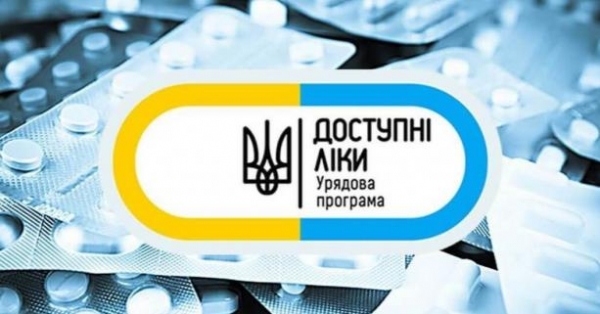This is possible thanks to the “Affordable Medicines” reimbursement programme, which is part of the Medical Guarantees Programme.
It is important for everyone to take care of their health everywhere, regardless of their place of residence: permanent or temporary. This issue is particularly acute for patients with the status of internally displaced persons who have chronic diseases or conditions and need to take regular medication.
Internally displaced persons can receive medicines free of charge or with a partial co-payment using the “Affordable Medicines” reimbursement programme, which is part of the Medical Guarantees Programme.
Reimbursement is a full or partial reimbursement to pharmacies for the cost of medicines or medical devices dispensed to patients on the basis of an e-prescription at the expense of the Medical Guarantee Programme. The reimbursement mechanism covers the most common chronic diseases. At the same time, these diseases are effectively treated on an outpatient basis.
The reimbursement programme includes medicines with proven efficacy. Today, “Affordable Medicines” covers more than 500 brand names in the following areas
- treatment of cardiovascular diseases (in particular, prevention of strokes and heart attacks)
- treatment of diabetes and diabetes insipidus, type 2 diabetes;
- insulin preparations;
- medical devices for determining blood glucose levels (test strips);
- against chronic diseases of the lower respiratory tract (asthma);
- against behavioural and mental disorders, epilepsy;
- for the treatment of Parkinson’s disease;
- immunosuppressive drugs for the treatment of people in the post-transplantation period;
- opioid analgesics (painkillers for palliative care patients with cancer).
The entire list of medicines included in the reimbursement programme can be found in the Register of Medicines and Medical Devices at тут.
To receive medicines under the reimbursement programme, you need an electronic prescription. Make an appointment with a primary care doctor – a family doctor, general practitioner or paediatrician. Based on the health assessment and medical indications, the doctor will refer you to a specialist and/or issue an e-prescription.
Depending on the type of disease, the patient’s route will vary:
- in case of cardiovascular diseases, type 2 diabetes mellitus, bronchial asthma – it is necessary to visit a family doctor, general practitioner or paediatrician;
- to receive insulin preparations or treatment of diabetes mellitus – to an endocrinologist;
- for treatment of mental and behavioural disorders – to a psychiatrist;
- for treatment of epilepsy – to a psychiatrist or neurologist;
- for Parkinson’s disease – to a neurologist;
- for immunosuppressive drugs for the treatment of persons in the post-transplantation period – to the transplant coordinator;
- to get opioid analgesics – to your family doctor or attending physician.
There are several ways to find a pharmacy that participates in the reimbursement programme:
- such pharmacies or pharmacy outlets can be visually identified by a sticker on the door: “Affordable Medicines is here”;
- call the NHSU contact centre at 16-77. The operator will tell you where the nearest pharmacy that has an agreement with the NHSU dispenses medicines in the required direction;
- find the nearest pharmacy with an agreement with the NHSU through the dashboard on the NHSU website “Electronic Map of ePrescription Pharmacies”. The dashboard will show you the pharmacies that match your request, with addresses and phone numbers. You can access the dashboard here;
- use the opportunity to order “Affordable Medicines” by Ukrposhta. For instructions on how to order medicines by Ukrposhta, see тут.
- find a pharmacy using the Ask Hrytsia chatbot.
The Medical Guarantee Programme provides all Ukrainians with the same free list of and access to medical services, regardless of the status of an internally displaced person. Learn more about the free medical services available under the Medical Guarantee Programme in the e-guide “Guide to the Medical Guarantee Programme for Patients 2024”. You can download the guide at .

